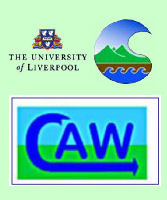|
It is very difficult in the modern
world to come to agreement on how to manage our environment - the usual
approach is through International Agreements to which Governments
'sign-up'. Signed by 150 government leaders at the 1992 Rio Earth
Summit, the Convention on Biological Diversity is dedicated to promoting
sustainable development. Conceived as a practical tool for translating
the principles of Agenda 21 into reality, the Convention recognizes that
biological diversity is about more than plants, animals and micro
organisms and their ecosystems – it is about people and our need for
food security, medicines, fresh air and water, shelter, and a clean and
healthy environment in which to live. Much more information on the Convention can be obtained
from the relevant part of the CBD website:
http://www.biodiv.org/convention/default.shtml
Altogether
Five
international conventions focus on biodiversity issues: the
Convention on Biological Diversity, the Convention on Conservation of
Migratory Species, the Convention on International Trade in Endangered
Species of Wild Fauna and Flora, the Ramsar Convention on Wetlands and
the World Heritage Convention.
The Convention on Biological Diversity is the most recent of these
multilateral environmental agreements, arising out of the Rio Earth
Summit of 1992, some twenty years after Ramsar (1971), WHC (1972) and
CITES (1975) entered into force, and ten years after CMS did (1983).
Each of the biodiversity-related conventions works to implement
actions at the national, regional and international level in order to
reach shared goals of conservation and sustainable use. In meeting their
objectives, the conventions have developed a number of complementary
approaches (site, species and/or ecosystem-based) and operational tools
(e.g., programmes of work, trade permits and certificates,
regional agreements, site listings, funds).
The Handbook on the Convention can be consulted on
http://www.biodiv.org/handbook/default.asp
|

